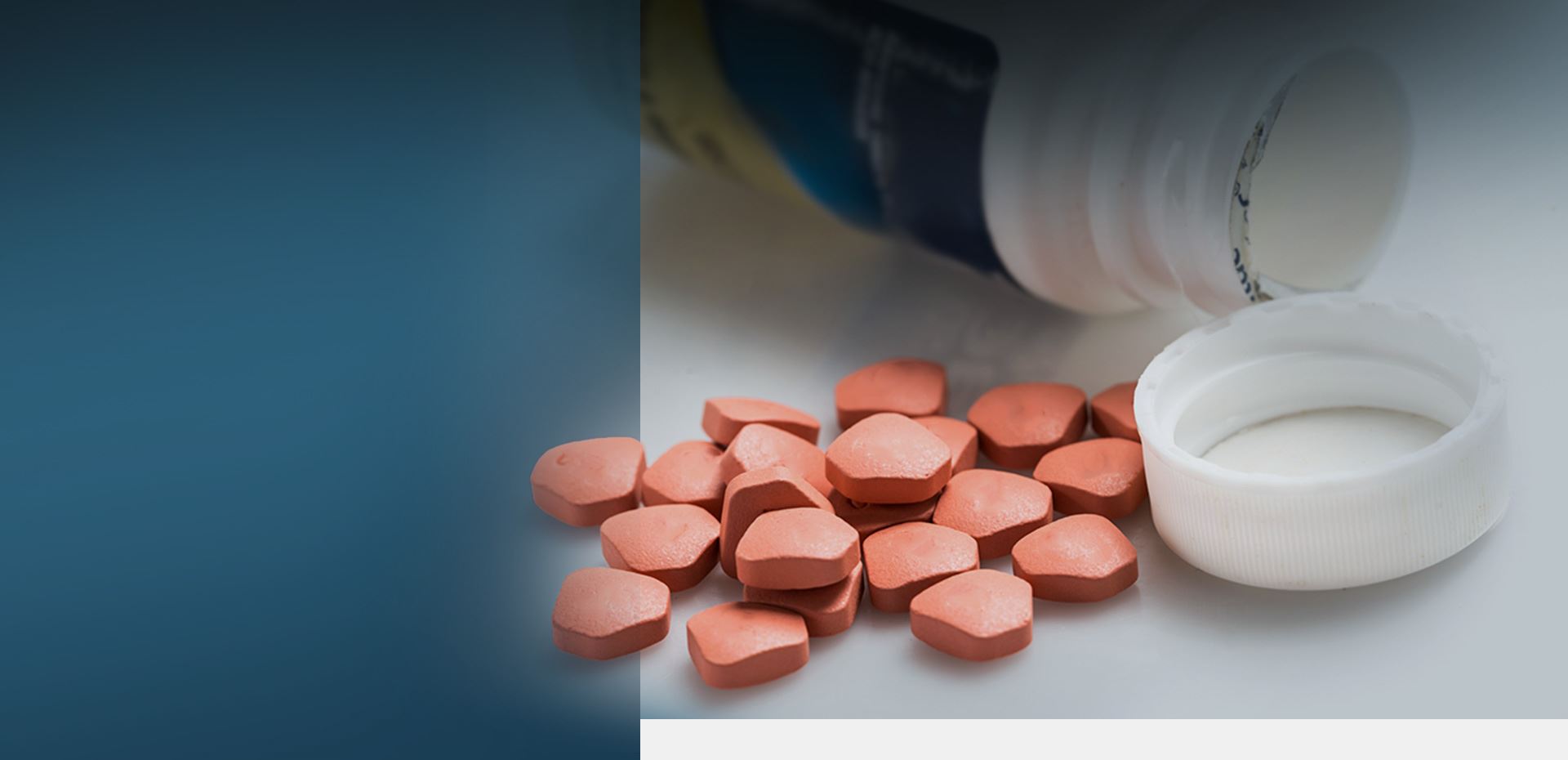
-
PROVEN TRACK RECORD
Wisner Baum has earned more than $4 billion in verdicts and settlements for clients across all practice areas. We have the resources and experience to take on various opponents and win.
-
History of Success
Our team has a strong reputation for successfully litigating against Big Pharma.
-
Leaders in the Zantac Litigation
Wisner Baum’s managing partner R. Brent Wisner serves as co-lead trial counsel for plaintiffs with Zantac lawsuits in California and Delaware state courts.
Zantac Lawsuit
Zantac Lawsuit Update - December 2024
People who developed cancer after taking Zantac (generic: ranitidine) may choose to file a Zantac lawsuit against the drug manufacturers to recover financial compensation for past, present, and future medical bills, lost wages, and other damages.
Zantac lawsuits are ongoing in California and Delaware state courts. In California, attorneys from Wisner Baum and co-counsel have secured several Zantac settlement agreements for clients who allege the heartburn drug caused their cancer. California Zantac attorneys are preparing for trial in 2024.
In Delaware, over 72,000 lawsuits are moving forward after an order from Judge Vivian Medinilla on May 31, 2024. The order found the opinions of plaintiffs’ experts reliable and admissible, allowing them to testify at trial that Zantac causes cancer.
Wisner Baum serves on the plaintiffs’ leadership for Zantac cancer cases filed in California State Court and Delaware State Court.
Information on Zantac Cancer Lawsuits
- Zantac Lawsuits FAQs
- Zantac Lawsuit Updates 2024
- History of Zantac (Ranitidine)
- Wisner Baum Leading Zantac Lawsuits in California and Delaware
- Attorneys with Billions in Verdicts and Settlements
- How We Can Help With Your Zantac Lawsuit
- Join the Zantac Cancer Lawsuit
Check to see if you are eligible to pursue a Zantac lawsuit by filling out this confidential case evaluation form.


Contact our experienced attorneys to learn about your legal options. Your consultation is free and confidential.
-
 What is a Bellwether Trial?
What is a Bellwether Trial? -
 Daubert Hearing Begins in Delaware Zantac Cancer Litigation
Daubert Hearing Begins in Delaware Zantac Cancer Litigation -
 Can I File a Zantac Lawsuit in 2023?
Can I File a Zantac Lawsuit in 2023? -
 Four Lawyers to Lead Over 75K Cases in Delaware Zantac Cancer Litigation
Four Lawyers to Lead Over 75K Cases in Delaware Zantac Cancer Litigation -
 CA Judge Denies GSK’s Bid to Toss Zantac Lawsuit, Trial Set for July
CA Judge Denies GSK’s Bid to Toss Zantac Lawsuit, Trial Set for July -
 Zantac Cancer Lawyers File Lawsuits for Over 7,000 People in All 50 States
Zantac Cancer Lawyers File Lawsuits for Over 7,000 People in All 50 States -
 Zantac Attorneys Sue FDA to Force Release of ‘Flawed’ Study Docs
Zantac Attorneys Sue FDA to Force Release of ‘Flawed’ Study Docs -
 Can I File a Zantac Lawsuit Without Proof of Purchase?
Can I File a Zantac Lawsuit Without Proof of Purchase?
Zantac Lawsuit Updates 2024
- December 3, 2024: A new Zantac lawsuit was filed in California recently alleging the heartburn drug caused a woman’s breast cancer. Some research, including this study from Sloan Kettering, has found positive associations between NDMA and breast cancer.
- November 21, 2024: Russell v. Boehringer Ingelheim concluded with a hung jury. Plaintiff John Russell alleged Zantac caused his bladder cancer. While the jury agreed that Zantac was dangerous and the pharmaceutical company failed to provide adequate warnings to consumers about the drug's risks, the jurors were evenly split 6-6 on whether the drug directly caused Mr. Russell's cancer, which means no verdict could be reached. Russell's attorneys, R. Brent Wisner and Jennifer Moore expressed confidence in their case, stating they “stand ready to retry this case immediately,” adding that “Boehringer dodged a bullet today - that won't happen again.”
- November 6, 2024: The jury is deliberating in Russell v. Boehringer Ingelheim Pharmaceuticals, Inc. We should have a verdict soon.
- October 28, 2024: Wisner Baum and co-counsel rested our case in Russell v. Boehringer Ingelheim Pharmaceuticals, Inc. We anticipate the trial will continue until mid to late November.
- October 9, 2024: GlaxoSmithKline PLC has announced Zantac settlements totaling up to $2.2 billion to resolve over 90% of the pending U.S. state court product liability cases. The lawsuits claim that a discontinued version of the heartburn drug Zantac caused cancer.
- October 3, 2024: The jury in Russell v. Boehringer Ingelheim Pharmaceuticals, Inc. was finalized yesterday. Opening statements begin today.
- October 2, 2024: Jury selection is underway in the first Zantac trial in California State Court. Opening statements in Russell v. Boehringer Ingelheim Pharmaceuticals, Inc. to follow.
- September 27, 2024: The trial of Russell v. Boehringer Ingelheim Pharmaceuticals, Inc., will begin with jury selection on Sept. 30, 2024, in Alameda County Superior Court. This case is the first to go to trial in California to allege ranitidine, the active ingredient in Zantac, causes cancer.
Plaintiff John Wayne Russell alleges Zantac caused his bladder cancer after long-term use. Mr. Russell is represented by Wisner Baum’s managing partner R. Brent Wisner and Jennifer Moore of the Moore Law Group.
Earlier this week, Judge Noël Wise denied Boehringer Ingelheim’s motion to dismiss Mr. Russell’s claim for punitive damages. This is the first Zantac trial against Boehringer where punitive damages will be at stake. - September 19, 2024: Wisner Baum and The Moore Law Group have reached a Zantac settlement agreement in more cases scheduled for trial in California state court. The settlement resolves two lawsuits against GlaxoSmithKline (GSK) filed by plaintiffs John Russell and Annette Hughes. Mr. Russell alleged Zantac caused his bladder cancer and Ms. Hughes alleged Zantac caused her colorectal cancer. Their cases were set for a joint Sept. 30, 2024 trial.
Zantac attorneys at Wisner Baum are still proceeding to trial against Boehringer Ingelheim for both Mr. Russell and Ms. Hughes. These will be the first Zantac trials in California. Jury selection begins on Monday, September 30, 2024, before Judge Noël Wise in Alameda County Superior Court. Opening statements are set for Oct. 7, 2024.
- September 4, 2024: A Connecticut judge refused to dismiss lawsuits filed by Connecticut residents against Zantac makers Boehringer Ingelheim, GlaxoSmithKline (GSK), Pfizer, and Sanofi. The defendants had argued that the court didn’t have jurisdiction over the lawsuits claiming that ranitidine causes cancer because the companies were not based in Connecticut.
But the judge ruled that plaintiffs showed “linkage sufficient to support the exercise of specific jurisdiction over the moving defendants.” The ruling also noted that the state “has an interest in adjudicating a claim that its residents suffered injury as a result of a defective or inadequate drug label.”
Connecticut may be a viable option for Zantac lawsuits moving forward.
- August 7, 2024: An Illinois judge declared a mistrial today in a Zantac lawsuit alleging Boehringer Ingelheim’s over-the-counter (OTC) ranitide caused the plaintiff’s prostate cancer. The jury indicated it could not reach a unanimous verdict after deliberating for several days. The parties in the lawsuit are scheduled to return to Cook County's chief judge next week to set a new trial date, and possibly a new trial judge.
- August 5, 2024: GSK announced in a statement that an Illinois jury concluded the drugmaker was not liable for a plaintiff’s colorectal cancer.
Another pending case in Illinois—a prostate cancer case—culminated in a confidential Zantac settlement agreement at the end of July.
The Zantac attorneys at Wisner Baum are currently preparing to take a case to trial in California on September 30, 2024. For more information on Zantac trials throughout the country, please visit our Zantac Trial page. - July 5, 2024: On Monday, Judge Vivian Medinilla of the Delaware Superior Court denied a request from GSK and other pharmaceutical companies to appeal a decision that permits over 70,000 Zantac cancer lawsuits to proceed in state court. Judge Medinilla’s ruling means Zantac manufacturers—including Pfizer, Sanofi, and Boehringer Ingelheim—must seek permission to appeal directly from the Delaware Supreme Court.
GSK has already submitted its appeal to the state's highest court. If the Delaware Supreme Court rejects their appeal, the Zantac lawsuits will advance to trial. - July 2, 2024: Another Zantac lawsuit has culminated in a settlement. The lawsuit was filed in Illinois state court by a man who developed prostate cancer after taking Zantac. The terms of the Zantac settlement are confidential.
- June 1, 2024: Delaware Zantac lawsuits are moving forward. Last Friday, Judge Medinilla issued an orderthat allows plaintiffs’ expert witnesses to testify at trial that Zantac (ranitidine) causes cancer. More than 72,000 claimants in Delaware Superior Court allege exposure to N-Nitrosodimethylamine (NDMA) in Zantac caused their cancer. Zantac lawsuits further allege the drugmaker defendants knew for decades that Zantac could break down into a carcinogen.
Wisner Baum’s managing partner, R. Brent Wisner, issued the following statement after Judge Medinilla’s order:
“This case has always been about getting the science in front of a jury. Judge Medinilla’s thoughtful order highlights something that often gets lost in the modern world of mass torts—the central role juries must play in holding companies accountable. Now, the writing is on the wall. GSK, Boehringer Ingelheim, and Sanofi will need to answer for their forty years of misconduct, and they will be judged by the very people they lied to.”
Read more about the latest news in the Delaware Zantac litigation in our press release.

Client-Focused Representation
REVIEWS & TESTIMONIALS
We believe our track record speaks for itself. But you don’t have to take our word for it. See what our clients have to say about working with us.
-
"I Can’t Imagine a Better Law Firm"
Multiple lawyers recommended Wisner Baum to me and I have been consistently impressed with the quality of their work.
- Best Law Firms Survey -
"They Are About Changing the Systems..."
Wisner Baum are not only amazing attorneys but more importantly, they are activists. They are about changing the systems which got us into trouble in the first place. They understand their role in the process of making change.
- Kim Witczak -
"Top Legal Minds in the Country"
The Wisner Baum firm has some of the top legal minds in the country; they are driven, determined, trustworthy, ethical and passionate.
- From Best Lawyers® Best Law Firms
Wisner Baum Leading Zantac Lawsuits in California and Delaware
Wisner Baum’s managing partner, R. Brent Wisner, serves as Co-lead Plaintiffs’ Liaison Counsel for the Ranitidine Product Cases, also known as the Ranitidine (Zantac) Judicial Council Coordinated Proceedings (JCCP 5150) in California Superior Court for the County of Alameda. He was also appointed co-lead trial counsel in the Zantac (Ranitidine) Products Liability Litigation (Civil Action No. N22C-09-101 ZAN) in Delaware Superior Court. As of August 2023, there are nearly 85,000 cases filed in California and Delaware.
Attorneys With Billions in Verdicts and Settlements
Class action lawyers from the national law firm of Wisner Baum represent thousands of people from across the country with personal injury and wrongful death claims against the makers of Zantac:
- Boehringer Ingelheim Pharmaceuticals, Inc., a subsidiary of Boehringer Ingelheim Corporation
- Sanofi US Services Inc., a wholly owned subsidiary of Sanofi S.A.
- Pfizer, Inc.
- GlaxoSmithKline, LLC
How We Can Help With Your Zantac Lawsuit
The trial-ready team of attorneys at Wisner Baum intends to hold the makers of Zantac accountable for allegedly concealing the ranitidine cancer link. With more than $4 billion in verdicts and settlements won across all practice areas, we have the experience and track record needed to secure maximum compensation for our clients.
We have filed Zantac lawsuits alleging the drug maker defendants have known for decades that the ranitidine molecule is capable of producing staggering amounts of the carcinogen NDMA when ingested as directed. Rather than warning people about the Zantac cancer risk, the drug makers willingly chose to put profit over people.
Our clients would never have purchased or used this drug had the manufacturers properly disclosed potentially fatal Zantac side effects. Outraged by the recklessness of these companies, we intend to hold them accountable for the damage they have caused.
Wisner Baum Zantac attorneys are in active litigation. If you were diagnosed with cancer after taking Zantac, you maybe eligible to pursue compensation in a Ranitidine lawsuit. Contact us online or call (855) 948-5098 to see if you qualify.
Join the Zantac Cancer Lawsuit
Wisner Baum is one of the leading firms in the Zantac litigation. In practice for nearly 50 years, our firm has earned a reputation for winning big cases against big companies. One of our greatest successes in litigation shares similarities to the Zantac litigation. Our lawsuits against Monsanto (now part of Bayer) involved allegations that a consumer product causes cancer (non-Hodgkin’s lymphoma).
At trial, co-lead counsel R. Brent Wisner delivered the opening and closing statements before the jury. Wisner and his colleagues earned a $2.055 billion jury verdict* for our clients, one of the largest personal injury jury verdicts in U.S. history. A similar case resulted in a $289.2 million jury verdict* on behalf of our client, the second-largest jury verdict in the state of California for 2018.
Put your case in the hands of an experienced legal team that understands what it takes to earn the results clients deserve.
*Jury verdicts later reduced







